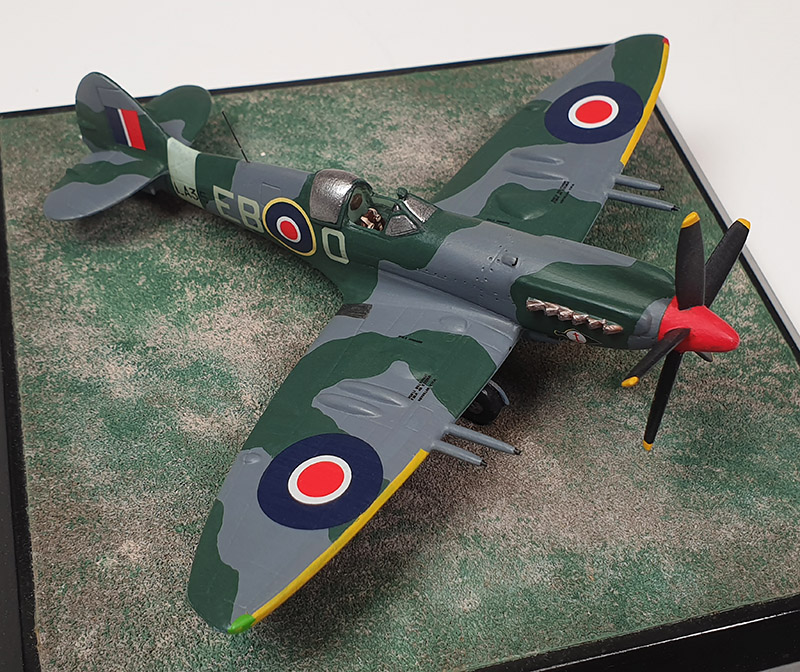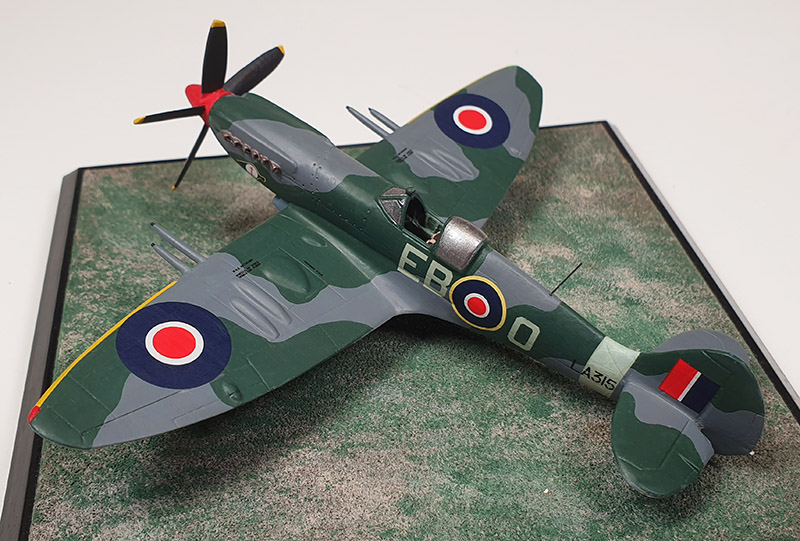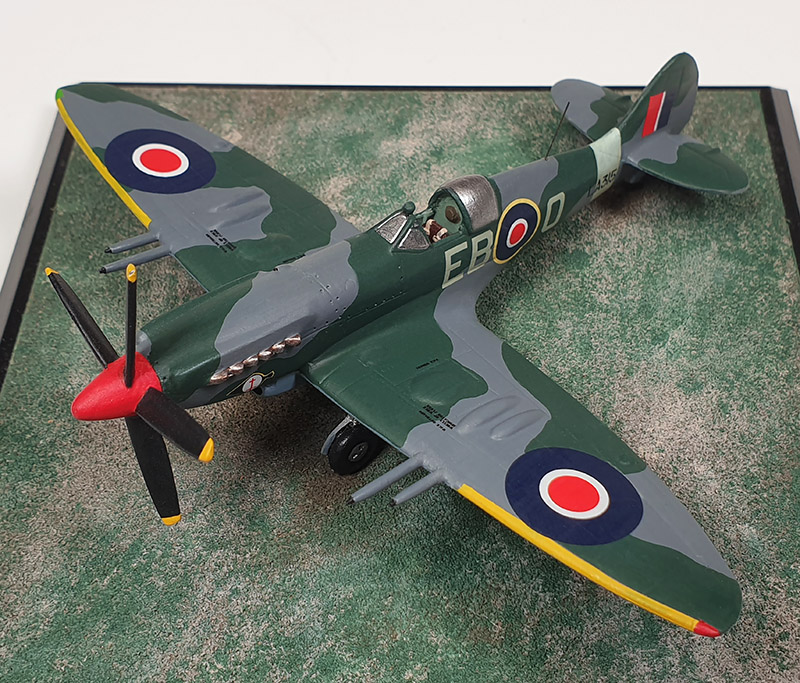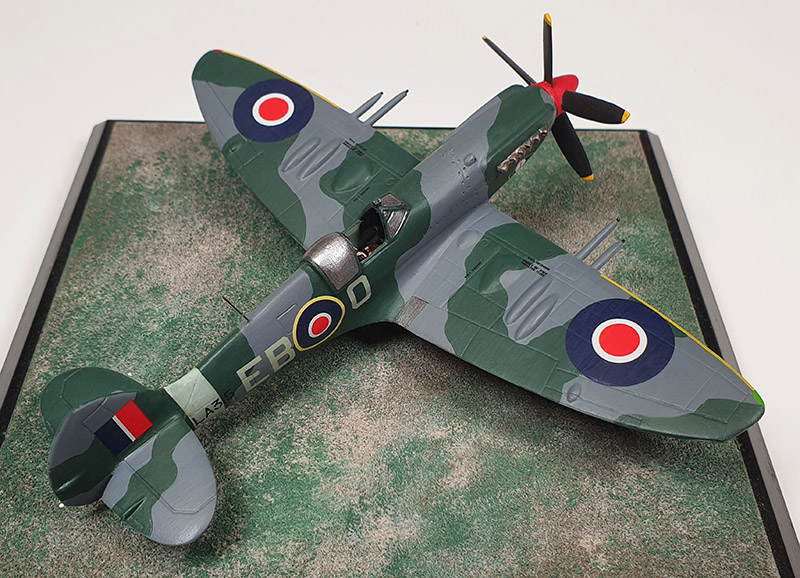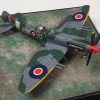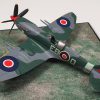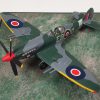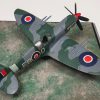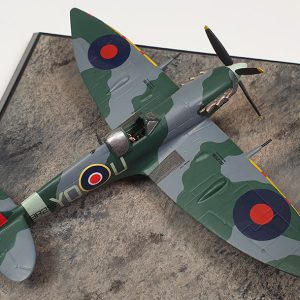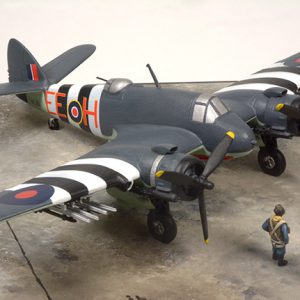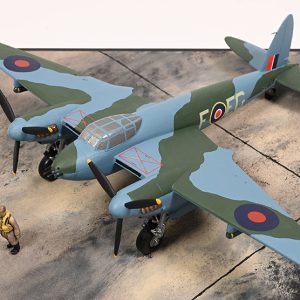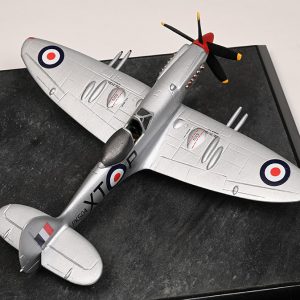Supermarine Spitfire F Mk 21 LA315 EB-O
41 Squadron, RAF Wittering, 1947.
The Spitfire F Mk 21 marks a significant stage in the development of the Spitfire, at this point the Spitfire begins to lose the last of its most identifiable features. This was to be the last production mark of Spitfire to have the classic high back as subsequent aircraft were all to have the cut down back with bubble canopy. However the Spitfire F Mk 21 did herald the introduction of the new laminar flow wing allowing the MK 21 a higher top speed than the earlier Spitfire Mk XIV. This new wing also allowed the Mk 21 to be armed with four 20mm Hispano cannons, only previously seen on some Spitfire Mk VCs. The Spitfire was now faster and better armed than it had ever been.
The Griffon-engined Spitfire F Mk 21 was the most widely-used mark of the fighter in post-war RAF service, and its colours and markings changed little after the end of hostilities. LA315 was built at South Marston, making its first flight there on 28 August, 1945. It arrived at Wittering in June 1946, and by August it was on 41 Squadron’s strength. 41 Squadron had been the first squadron to receive first production Griffon engine Spitfire, the Spitfire Mk XII. The “spearhead” frame for the unit marking had been used by Fighter Command before September 1939, and was revived, here in a somewhat more stylised form, in the subsequent peace; in this case, it carries 41’s double-armed cross derived from the arms of Saint Omer where the squadron, then equipped with the FE.8, had its first overseas headquarters in October 1916. The device is still carried to this day on its Tornados. LA315 served with 41 until August 1947, when the squadron was re-equipped with the Hornet; LA315, as with many aircraft during this period, was transferred to the Royal Auxiliary Air Force, in this case 602 (City of Glasgow) Squadron. It had both a flying and a ground accident while with this unit, and was sold to Airwork General Trading in April 1951.


